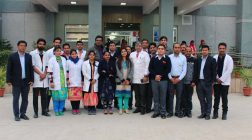About 38 million people in India (which is more than Canada’s population) fall below the poverty line every year due to healthcare expenses
About 38 million people in India (which is more than Canada’s population) fall below the poverty line every year due to healthcare expenses, of which 70% is on purchase of drugs. Yet, the much-awaited drug price control order (DPCO) 2013, meant to control the price of medicines does not cover over 80% of the medicines in the market. Many drugs crucial for India’s disease profile have been left out, which means people are unlikely to see any significant reduction in expenditure on medicines.
In 2003, the Supreme Court, while hearing a case on the National Pharmaceutical Pricing Policy, had directed the government to formulate appropriate criteria to identify essential and life saving drugs and ensure that they came under price control. It took over a decade for the government to announce the DPCO in May 2013.
By the government’s own admission in an affidavit filed in court, the market value and share of medicines covered by DPCO is just 18% of the country’s pharma market. Many life-saving medicines including anti-cancer drugs, expensive antibiotics and drugs needed for organ transplantation have been left out.
The government merely lifted the entire National List of Essential Medicines (NLEM) 2011, comprising 348 medicines, and placed it under price control. “The literal translation of the NLEM into DPCO 2103 has been done without a thought of its implications. The companies have been provided a convenient escape route. A 500 mg Paracetamol tablet is under price control but its 650 mg strength is not; individual anti-TB drugs are under price control but their combinations which outsell single ingredient preparations are not. This undermines the entire objective of making essential medicines more affordable to Indians,” explained Dr Anurag Bhargava, associate professor at the Himalayan Institute of Medical Sciences. He stressed the need to expand the scope of price control to include all dosages and combinations, as was the case in the previous DPCO of 1995.
With the current DPCO not covering combinations of drugs, a lot of drugs for diabetes and hypertension and many other conditions will move out of price control as they are used in combination. The combinations not covered under NLEM account for Rs 31,866 crore or almost 45% of the total pharma market of Rs 71,246 crore in 2012.
An independent evaluation of the National Pharmaceutical Pricing Policy, by the Public Health Foundation of India (PHFI) and the Institute for Studies in Industrial Development (ISID) for a forthcoming report explains why it is important to expand the scope of price control. According to their evaluation, the market value of anti-infectives under price control is Rs 4,636 crore, just 6.5% of the total market. Anti-infectives, which include antibiotics, have the biggest chunk of India’s pharma market.
“Our evaluation shows that if price control was expanded to combinations, additional strengths and dosages of just the anti-infectives included in the NLEM, the total market value would be worth more than Rs 10,500 crore, about 15% of the total pharma market, a vast improvement over the current coverage of just 6.5%,” said Malini Aisola of PHFI.
The essential medicines list does not seem to have taken into account India’s disease profile as it leaves out several drugs crucial for treating many common conditions, pointed out Dr Bhargava. The government’s own affidavit admits that only 18% of anti-diabetics, 19% of anti-TB medicines and 6% of the respiratory therapeutics segment are under price control. This is despite India being the diabetes and TB capital of the world, and facing high prevalence of asthma and chronic obstructive pulmonary disease (COPD).
There’s good reason why we need price controls. The MRP charged by companies is often many times the cost of production leaving them with profit margins unheard of in any other sector. Price control was meant to address this problem, particularly in medicines important for India. But it has failed to make any significant difference.
One reason is the way prices are determined under the current DPCO. Under the 1995 DPCO, the drugs prices under controls was decided by taking the cost of manufacture and fixing a certain percentage as mark-up, which included packaging and distribution costs, retailers’ margin, excise duty and profit. But the current DPCO uses a new formula under which the price is fixed by taking the average price of brands having one per cent or more of market share and adding 16% as retail margin.











